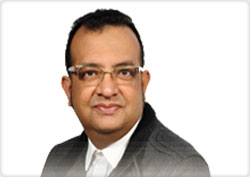Sprains and strains are common sports injuries. While they are mostly mentioned together, they are quite different. A sprain is a tear or stretch of a ligament and as you may already know, the ligament’s job is to stabilize the joints in the body. A strain on the other hand is an injury that affects tendons or muscles. Sprains and strains are caused by trauma and this could be direct or indirect. Overstretching muscles and ruptures with the ligaments could also bring about sprains. Strains are mostly as a result of muscle and tendon overuse. A patient could also suffer from an acute strain and this could be brought about by excessive contraction of a muscle, trauma caused by a blow or over stretching a muscle. These injuries mostly affect athletes, people in poor physical shape and overweight persons as well.
Types
Sprains normally affect ligaments and the most common areas affected include the knee, ankles, wrist and thumbs. These areas become strained due to repetitive activity, twisting or applying excessive force on their respective joints.
There are also different types of strains, and the most common are lumbar strains which affect the lower back muscles. Quadriceps strains are also common and these affects the muscles found on the front part of the thigh. Gastrocnemius and soleus strains are medical terms used to describe strains within the calf muscles. Hamstring strains are quite popular with athletes and these affect the muscles running from the back of the leg to the hip and knee joints.
Symptoms
Major symptoms of sprains and strains include: swelling and inflammation, pain and limited/loss of movement in the affected muscle or ligament.
Treatments
Treating sprains and strains is determined by the affected joint and severity of the injury. Medication can be used to treat mild sprains and strains and NSAIDs may be prescribed along with self care measures. Different therapies may be used, and heat and ice compression therapy are commonly used to minimize swelling and pain. In severe cases, the affected area may be dressed with a brace or splint to prevent further damage. Surgery also may be recommended if the patient has a ruptured muscle or torn ligament.
Diet
Food will not prevent you from developing a sprain or strain, but it can promote your overall health and decrease your likelihood of getting injured. You need to ensure that your body gets enough protein and calories, as these help to regenerate damaged connective tissue. Vitamins are very helpful. They have anti-inflammatory properties and promote healing of damaged tissue. Look for foods rich in minerals, Vitamins C and E as they help to promote tissue repair. Zinc is also an important component in wound repair.
Remedies
There are self-care remedies that could help you heal faster and the RICE method is one of them. RICE stands for rest, ice, compression and elevation. Avoid strenuous activities that hurt and cause further injury to the affect part of the body. Ice is helpful in reducing pain and inflammation. Compression therapy helps to reduce swelling and in this case an elastic band is used to compress the swelling. Ensure that the compression is not too tight, as this could reduce blood circulation. Elevating the injured area can help reduce swelling as this drains off the excess fluid.








